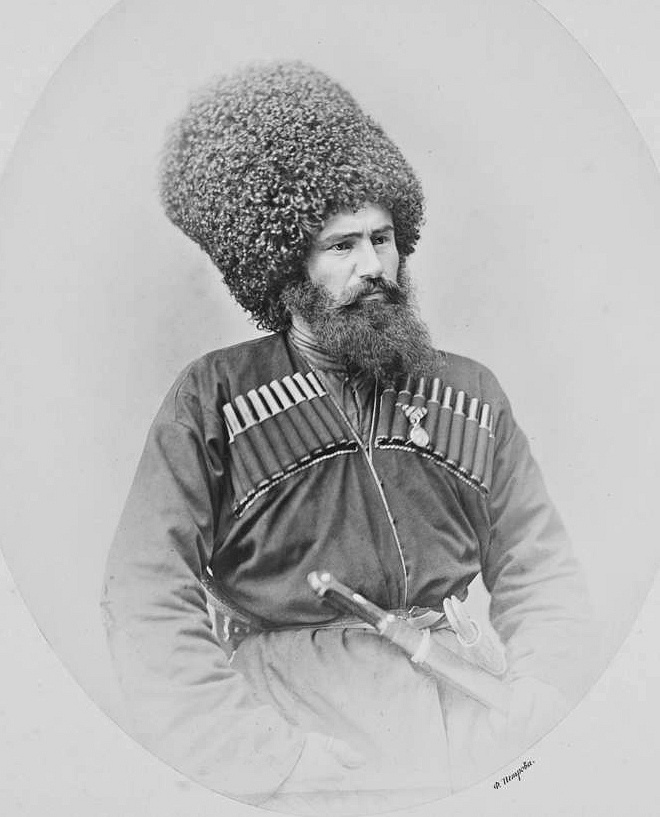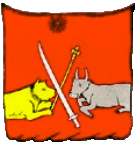|
Tarki
Tarki ( kum, Таргъу, Tarğu; russian: Тарки́) formerly also spelled Tarkou and also known as Tarku, is an urban locality (an urban-type settlement) under the administrative jurisdiction of Sovetsky City District of the City of Makhachkala in the Republic of Dagestan, Russia, located on the Tarki-tau ('' kum, Tarğu-taw'') mountain. As of the 2010 Census, its population was 15,356. History Tarki had been the capital of Kumyk historical states before they were abolished by Russia. According to some scholars, Tarki sits on the site of Samandar, the capital of Khazaria until the early 8th century. In 1396, Timur passed through Tarki during the Tokhtamysh–Timur war. In the middle ages the Shamkhalate state is formed, lately becoming Shamkhalate of Tarki. Tarki had been the capital of the Kumyk state at least from the 16th century. This state was not abolished until 1867. Tarki is mentioned by Armenian chronicles of the 7-8th century, by Giovanni Carpini in 13 ... [...More Info...] [...Related Items...] OR: [Wikipedia] [Google] [Baidu] |
Tarki
Tarki ( kum, Таргъу, Tarğu; russian: Тарки́) formerly also spelled Tarkou and also known as Tarku, is an urban locality (an urban-type settlement) under the administrative jurisdiction of Sovetsky City District of the City of Makhachkala in the Republic of Dagestan, Russia, located on the Tarki-tau ('' kum, Tarğu-taw'') mountain. As of the 2010 Census, its population was 15,356. History Tarki had been the capital of Kumyk historical states before they were abolished by Russia. According to some scholars, Tarki sits on the site of Samandar, the capital of Khazaria until the early 8th century. In 1396, Timur passed through Tarki during the Tokhtamysh–Timur war. In the middle ages the Shamkhalate state is formed, lately becoming Shamkhalate of Tarki. Tarki had been the capital of the Kumyk state at least from the 16th century. This state was not abolished until 1867. Tarki is mentioned by Armenian chronicles of the 7-8th century, by Giovanni Carpini in 13 ... [...More Info...] [...Related Items...] OR: [Wikipedia] [Google] [Baidu] |
Kumyks
, image = Abdul-Wahab son of Mustafa — a prominent Kumyk architect of the 19th century. , population = near 600,000 , region1 = , pop1 = 503,060 , ref1 = , region2 = , pop2 = 10,000 , ref2 = , region3 = , pop3 = 718 , ref3 = , langs = Kumyk language , region4 = , pop4 = 1200 , ref4 = , region5 = , pop5 = 481 , ref5 = , region6 = , pop6 = 360 , ref6 = , region7 = , pop7 = 33 , ref7 = [...More Info...] [...Related Items...] OR: [Wikipedia] [Google] [Baidu] |
Shamkhalate Of Tarki
The Shamkhalate of Tarki, or Tarki Shamkhalate (also Shawhalate, or Shevkalate, ') was a Kumyk state in the eastern part of the North Caucasus, with its capital in the ancient town of Tarki. It formed on the territory populated by Kumyks and included territories corresponding to modern Dagestan and adjacent regions. After subjugation by the Russian Empire, the Shamkhalate's lands were split between the Empire's feudal domain with the same name extending from the river Sulak to the southern borders of Dagestan, between Kumyk possessions of the Russian Empire and other administrative units. At some point the Shamkhalate had vassals from the Caspian Sea to Kabarda and Balkaria. The Shamkhals also possessed the title of the Vali of Dagestan and had their residence in the ancient Khazar-Kumyk mountainous shelter. Annexation of the Tarki Shamkhalate and other territories of Dagestan by Russia was concluded by the Treaty of Gulistan in 1813. In 1867 the feudal domain of the Shamkhala ... [...More Info...] [...Related Items...] OR: [Wikipedia] [Google] [Baidu] |
Republic Of Dagestan
Dagestan ( ; rus, Дагеста́н, , dəɡʲɪˈstan, links=yes), officially the Republic of Dagestan (russian: Респу́блика Дагеста́н, Respúblika Dagestán, links=no), is a republics of Russia, republic of Russia situated in the North Caucasus of Eastern Europe, along the Caspian Sea. It is located north of the Greater Caucasus, and is a part of the North Caucasian Federal District. The republic is the southernmost tip of Russia, sharing land borders with the countries of Azerbaijan and Georgia (country), Georgia to the south and southwest, the Russian republics of Chechnya and Kalmykia to the west and north, and with Stavropol Krai to the northwest. Makhachkala is the republic's capital city, capital and types of inhabited localities in Russia, largest city; other major cities are Derbent, Kizlyar, Izberbash, Kaspiysk and Buynaksk. Dagestan covers an area of , with a population of over 3.1 million, consisting of over 30 ethnic groups and 81 nati ... [...More Info...] [...Related Items...] OR: [Wikipedia] [Google] [Baidu] |
Makhachkala
Makhachkala ( rus, Махачкала, , məxətɕkɐˈla, links=yes),; av, Махӏачхъала, Maħaçqala; ce, ХӀинжа-ГӀала, Hinƶa-Ġala; az, Маһачгала, Mahaçqala; nog, Махачкала; lbe, Махачкъала; rut, Магьачкъала, Mahaçqala. previously known as Petrovskoye (; 1844–1857) and Port-Petrovsk (; 1857–1921), or by the local Kumyk name of Anji, is the capital and largest city of the Republic of Dagestan in Russia. The city is located on the Caspian Sea, covering an area of , with a population of over 603,518 residents, while the urban agglomeration covers over , with a population of roughly 1 million residents. Makhachkala is the fourth-largest city in the Caucasus, the largest city in the North Caucasus and the North Caucasian Federal District, as well as the third-largest city on the Caspian Sea. The city is extremely ethnically diverse, with a minor ethnic Russian population. The city's historic predecessor is the ... [...More Info...] [...Related Items...] OR: [Wikipedia] [Google] [Baidu] |
Russo-Persian War (1722–1723)
The Russo-Persian War of 1722–1723, known in Russian historiography as the Persian campaign of Peter the Great, was a war between the Russian Empire and Safavid Iran, triggered by the tsar's attempt to expand Russian influence in the Caspian Sea, Caspian and Caucasus regions and to prevent its rival, the Ottoman Empire, from territorial gains in the region at the expense of declining Safavid Iran. The Russian victory ratified for Safavid Iran's cession of their territories in the North Caucasus, Transcaucasia, South Caucasus and contemporary northern Iran to Russia, comprising the cities of Derbent (southern Dagestan) and Baku and their nearby surrounding lands, as well as the provinces of Gilan Province, Gilan, Shirvan, Mazandaran Province, Mazandaran and Gorgan, Astarabad conform the Treaty of Saint Petersburg (1723). The territories remained in Russian hands for nine and twelve years, when respectively according to the Treaty of Resht of 1732 and the Treaty of Ganja of 173 ... [...More Info...] [...Related Items...] OR: [Wikipedia] [Google] [Baidu] |
Samandar (city)
Samandar (also Semender) was a city in (and briefly capital of) Khazaria, on the western shore of the Caspian Sea, in what is now Dagestan. At some later date, it may have been moved inland to some areas near present-day village of Shelkovskaya in the modern Russia's Chechen Republic. Location The exact location of the city is unknown. Medieval Arabic sources report simply that it was midway between Derbent and Atil, near the shore of the Caspian Sea. Modern scholars have variously identified Samandar with Kizlyar on the Terek River, or with Tarki further south on the Caspian coast. Tarki corresponds more closely to medieval sources, as the 10th-century '' Hudud al-'Alam'' reports that Samandar was on the coast, and archaeological finds from the Khazar period, including fortifications, have been found there. The city might possibly had been moved at some later date to the hill fort corresponding to the present day location of the village of Shelkovskaya on the Terek. History The ... [...More Info...] [...Related Items...] OR: [Wikipedia] [Google] [Baidu] |
Cossacks
The Cossacks , es, cosaco , et, Kasakad, cazacii , fi, Kasakat, cazacii , french: cosaques , hu, kozákok, cazacii , it, cosacchi , orv, коза́ки, pl, Kozacy , pt, cossacos , ro, cazaci , russian: казаки́ or , sk, kozáci , uk, козаки́ are a predominantly East Slavic Orthodox Christian people originating in the Pontic–Caspian steppe of Ukraine and southern Russia. Historically, they were a semi-nomadic and semi-militarized people, who, while under the nominal suzerainty of various Eastern European states at the time, were allowed a great degree of self-governance in exchange for military service. Although numerous linguistic and religious groups came together to form the Cossacks, most of them coalesced and became East Slavic-speaking Orthodox Christians. The Cossacks were particularly noted for holding democratic traditions. The rulers of the Polish-Lithuanian Commonwealth and Russian Empire endowed Cossacks with certain sp ... [...More Info...] [...Related Items...] OR: [Wikipedia] [Google] [Baidu] |
Timurid Empire
The Timurid Empire ( chg, , fa, ), self-designated as Gurkani ( Chagatai: کورگن, ''Küregen''; fa, , ''Gūrkāniyān''), was a PersianateB.F. Manz, ''"Tīmūr Lang"'', in Encyclopaedia of Islam, Online Edition, 2006 Turco-Mongol empire that dominated Greater Iran in the early 15th century, comprising modern-day Iran, Iraq, Afghanistan, much of Central Asia, the South Caucasus, as well as most of contemporary Pakistan and parts of contemporary North India and Turkey. The empire was founded by Timur (also known as Tamerlane), a warlord of Turco-Mongol lineage, who established the empire between 1370 and his death in 1405. He envisioned himself as the great restorer of the Mongol Empire of Genghis Khan, regarded himself as Genghis's heir, and associated much with the Borjigin. Timur continued vigorous trade relations with Ming China and the Golden Horde, with Chinese diplomats like Ma Huan and Chen Cheng regularly traveling west to Samarkand to buy and sell goods. The em ... [...More Info...] [...Related Items...] OR: [Wikipedia] [Google] [Baidu] |
Peter The Great
Peter I ( – ), most commonly known as Peter the Great,) or Pyotr Alekséyevich ( rus, Пётр Алексе́евич, p=ˈpʲɵtr ɐlʲɪˈksʲejɪvʲɪtɕ, , group=pron was a Russian monarch who ruled the Tsardom of Russia from to 1721 and subsequently the Russian Empire until his death in 1725, jointly ruling with his elder half-brother, Ivan V until 1696. He is primarily credited with the modernisation of the country, transforming it into a European power. Through a number of successful wars, he captured ports at Azov and the Baltic Sea, laying the groundwork for the Imperial Russian Navy, ending uncontested Swedish supremacy in the Baltic and beginning the Tsardom's expansion into a much larger empire that became a major European power. He led a cultural revolution that replaced some of the traditionalist and medieval social and political systems with ones that were modern, scientific, Westernised and based on the Enlightenment. Peter's reforms had a lasting ... [...More Info...] [...Related Items...] OR: [Wikipedia] [Google] [Baidu] |
Stepan Razin
Stepan Timofeyevich Razin (russian: Степа́н Тимофе́евич Ра́зин, ; 1630 – ), known as Stenka Razin ( ), was a Cossack leader who led a major uprising against the nobility and tsarist bureaucracy in southern Russia in 1670–1671. Early life Razin's father, Timofey Razya, supposedly came from a suburb of Voronezh, a city near Russia's steppe frontier, called the Wild Fields. Razin's uncle and grandmother still lived in the village of ''New Usman or ''Usman' Sobakina'', outside of Voronezh, until 1667. The identity of Razin's mother is debated. In one document, Razin was referred to as a ''tuma Cossack'' which means "half-blood", leading to a hypothesis that his mother was a captured "Turkish" (''turchanka'') or Crimean Tatar woman. However, this term was also used by "upper Cossacks" as a derogatory nickname towards all "lower Cossacks" regardless of origin Another hypothesis draws on information about Razin's godmother Matrena Govorukha. According to ... [...More Info...] [...Related Items...] OR: [Wikipedia] [Google] [Baidu] |








